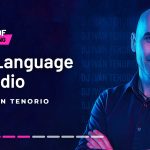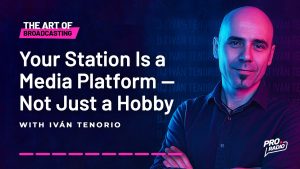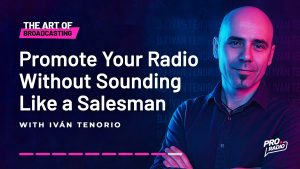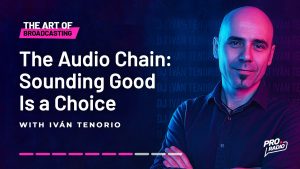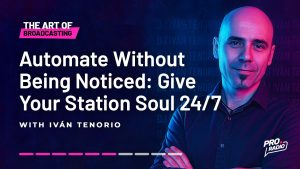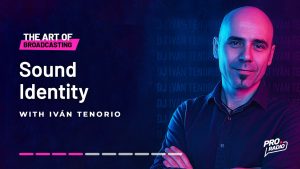- arrow_back Home
- keyboard_arrow_right The Art Of Broadcasting
How to Build a Sound Identity for Your Radio Station
The Art Of Broadcasting 14 299 webdesign May 22, 2025
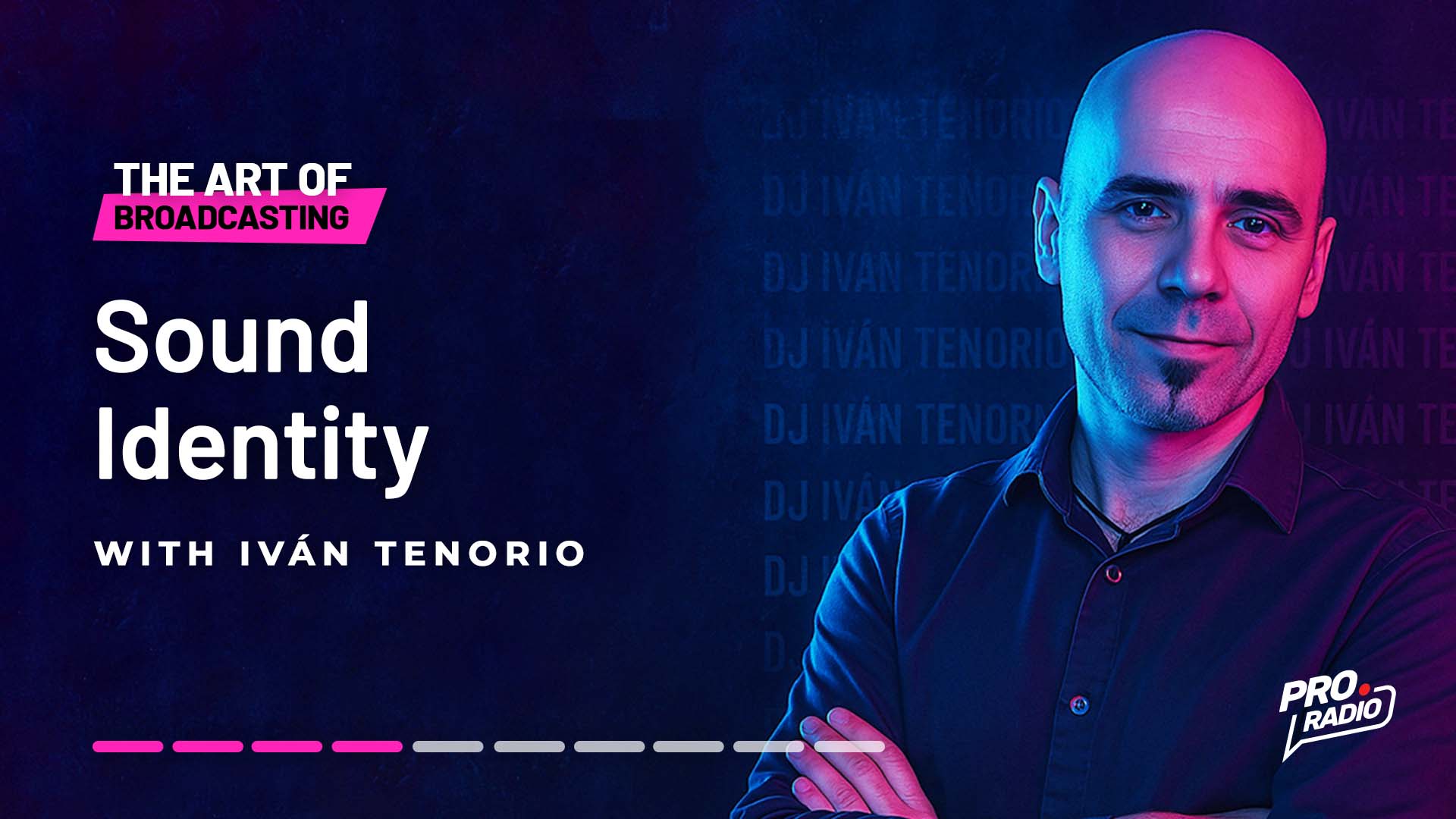
Video sneak peek
A radio station isn’t just about what it plays—it’s about how it sounds over time. And that comes down to one essential (and often forgotten) element: structure.
A strong, well-designed schedule doesn’t call attention to itself—but it’s felt. It keeps listeners tuned in a little longer, brings them back tomorrow, and makes your station feel alive, intentional, and dynamic. Without structure, everything blends together—or worse, it feels aimless.
Get the Next Updates in Your Inbox
Want to go deeper? Subscribe now and get the next chapters, tips, free templates, and exclusive radio updates straight to your inbox.
[lwptoc]
Tone, voice and personality – How to Make Your Station Recognizable Without Saying Its Name
When someone tunes into your station—whether by accident or recommendation—they instantly ask themselves a question, even if it’s not out loud:
“What am I listening to?”
And more importantly: “Does this match who I am?”
That’s what we call sound identity. It’s not just a jingle. It’s not a smooth voice. It’s not a reverb effect or a loud bumper. It’s the emotional and aesthetic atmosphere of your station.
It’s what makes listeners recognize your brand within three seconds—even when no one says your name.
What exactly is sound identity?
It’s the acoustic personality of your station. It’s what people hear when you’re not speaking. It’s built from a mix of elements that leave your unique mark:
- Voice tone (formal, casual, intimate, ironic, neutral…)
- Dominant music style
- Type of voiceover and diction
- Use of effects, transitions, and silence
- Jingles, sweepers, stingers, station IDs
- Overall rhythmic cadence
- Presence or absence of pauses
- The kind of words you use
- Even what you choose NOT to air
Sound identity isn’t something you improvise. You decide it—and take care of it.
What does the listener have to do with any of this?
Everything.
You can’t build a radio station without knowing who it’s for. Once you’ve defined your ideal listener, your station needs to sound like something that fits their emotional world—not just what they like, but what doesn’t annoy them or break their vibe.
If you add curiosity or emotion to that experience, you win their loyalty.
Example: Laura, a 38-year-old freelance designer in Madrid, listens to the radio while working. What should never happen when she tunes into your station?
- A loud, jarring ad blares unexpectedly
- A host yells while introducing a segment
- A completely mismatched song starts playing
- A dead air gap lasts 10 seconds due to a tech fail
These things break the mood—and the relationship.
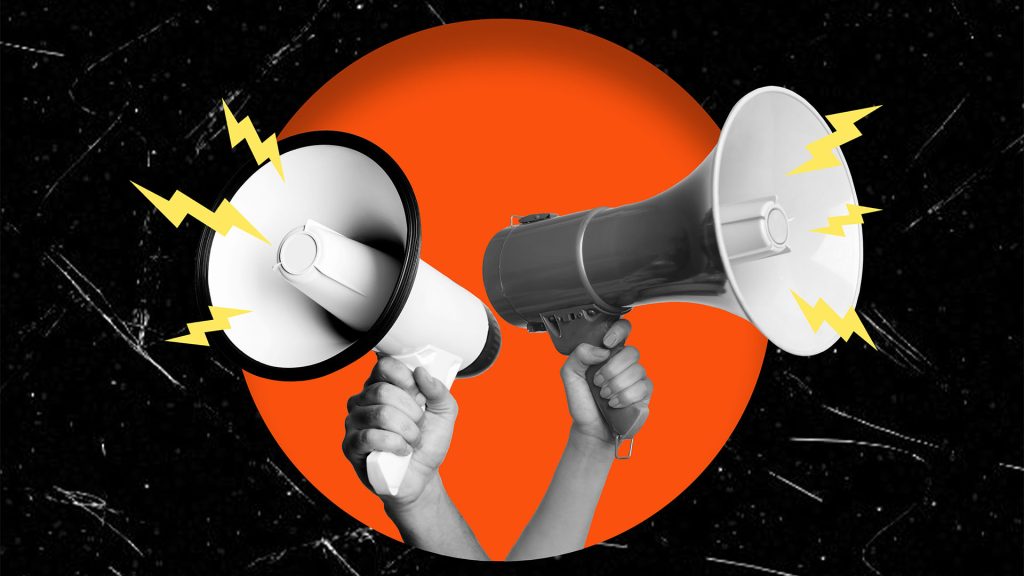
How to define your station’s sound identity
1. Define your overall tone
Is your station thoughtful? Entertaining? Experimental? Educational? Your tone should reflect the attitude of your content—and it should be consistent across every element, not just the voice.
2. Choose a voice (or voices) that represent your brand
It doesn’t always have to be you behind the mic. But your main voice—host, presenter, even synthetic—should feel stable and distinctive. Rhythm, diction, greetings, and closings all matter.
3. Design your sound atmosphere
- What genres of music dominate?
- How do you transition between segments?
- Which sound effects make your station recognizable?
- Do you use ambient sounds, backgrounds, textures?
- Do you use silence or background noise between blocks?
A well-designed soundscape is as important as your content.
4. Fine-tune your branding elements (jingles, sweepers, transitions)
Think about:
- What should your jingle communicate? Calm? Energy? Warmth?
- What phrase defines your station?
- Does each show or segment have its own sound identity?
These are your audio logos. They shouldn’t scream—they should stick.
Lesson learned
People don’t remember your station by everything you say—they remember how you sound while saying it.
Sound identity is your emotional business card.
If you sound like everyone else, you disappear.
If you sound like yourself—even subtly—you’re already building a strong brand.
Practical exercise: Create your sound map
Write down your answers:
- What’s the overall tone of your station? (Use 3 adjectives)
- What type of music is most common—and why?
- Who is the voice of your station? (Describe or name them)
- What sounds play between segments?
- What sounds will NEVER be heard on your station?
- Are there pauses? What are they for?
- Could your ideal listener recognize your station with their eyes closed, without hearing the name?
This is the first step toward audio branding.
AI Hack: Design your sound identity using AI
Use this prompt to shape a full sound profile:
“I’m creating an online radio station with a [describe the vibe: relaxed, cultural, experimental, narrative…] style. Help me define its sound identity: voice tone, recommended music genres, jingle and bumper style, background effects or textures, and tips for maintaining audio consistency. The goal is for it to be recognizable even without saying the station’s name.”
You can go further: ask for jingle examples, intro phrases, announcer styles, ambient effects—everything you need to build a cohesive atmosphere.
When your station plays… it should sound like YOU
Sound identity isn’t random. It’s crafted, tested, adjusted, and maintained.
And when done right, it doesn’t have to shout.
Because the listener—without knowing why—feels they’ve arrived at a space that speaks their language.
That language… is sound.
Bonus AI Hack: ElevenLabs — Your Station’s Voice, Even If It’s Not Yours
Your sound identity doesn’t just depend on what is said—but who says it and how. Not everyone wants—or can—use their own voice. Maybe you want variety. Or a voice that never fails, tires, or ad-libs.
That’s where a powerful tool steps in:
ElevenLabs — The New Standard in Synthetic Voice
ElevenLabs (https://elevenlabs.io) offers ultra-realistic AI-generated voices—natural, expressive, and almost indistinguishable from real human speech.
Used by content creators, audiobook producers, developers, and now… online radios and audio branding projects.
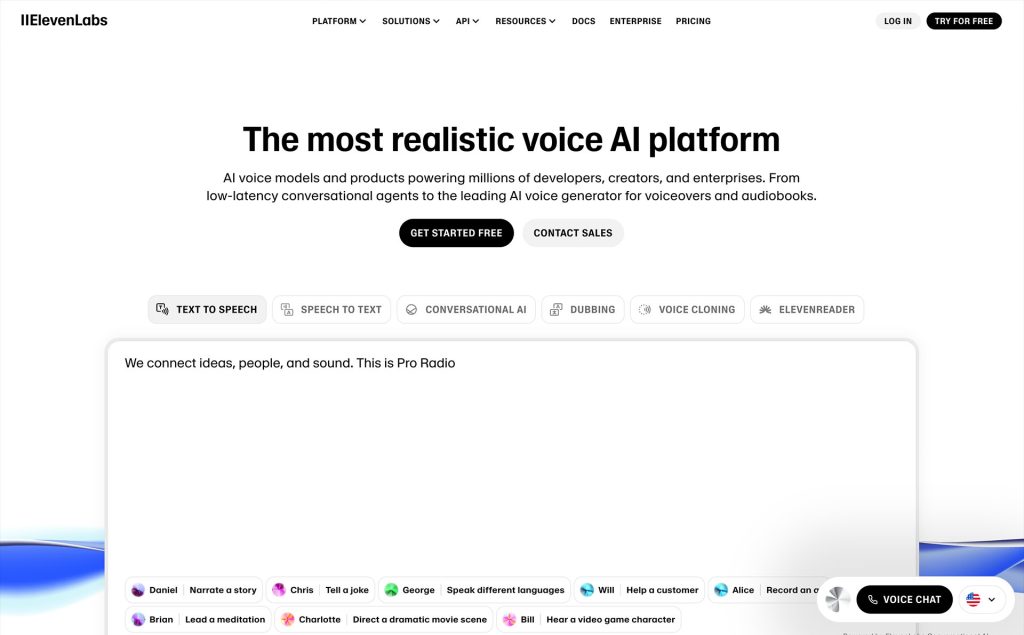
What can ElevenLabs bring to your radio station?
- Create a stable brand voice: Choose a voice that reflects your tone (serious, warm, youthful, neutral…) and use it for intros, promos, station IDs, and schedule reminders.
- Automate recurring segments: Got a daily capsule? Just type it, and get a clean, professional voiceover ready to air—no mic needed.
- Use multiple voices: Assign different voices for different time blocks or topics to create a dynamic yet coherent atmosphere.
- Turn blog posts into audio: Already publishing content for your site or socials? Use ElevenLabs to convert it into short, branded audio clips—great for podcasts or on-demand streaming.
Practical exercise with ElevenLabs
- Create a free account at https://elevenlabs.io
- Pick a voice that matches your station’s tone
- Write 3 identity phrases, such as:
- “You’re listening to [Station Name]. Music that breathes with you.”
- “The night is ours. Welcome to your soundspace.”
- “We connect ideas, people, and sound. This is [Station Name].”
- Convert the phrases into audio and test them during your broadcast
Does it sound natural? Does it match your vibe? Does it fit your programming?
Adjust as needed. You’re shaping your spoken brand.
AI doesn’t mean impersonal
What makes tools like ElevenLabs valuable isn’t that they “sound human”—but that they give you precise control over your station’s sonic expression. You decide tone, cadence, volume, emotion.
And that’s gold when you’re building a meaningful, aesthetic radio identity.
AI isn’t replacing you. It’s helping you sound exactly the way you want your audience to feel.
Receive the Next Chapters in Your Inbox
Want more tips to shape the perfect sound for your radio station?
Next week: Writing to Be Heard: How to Speak to the Ear, Not the Schedule
Subscribe to our newsletter to get future chapters delivered straight to your inbox—plus free templates, exclusive updates, and special discounts for broadcasters, podcasters, and internet radio creators.
Don’t miss out—build your dream station with Pro Radio.
Start your radio website TODAY!
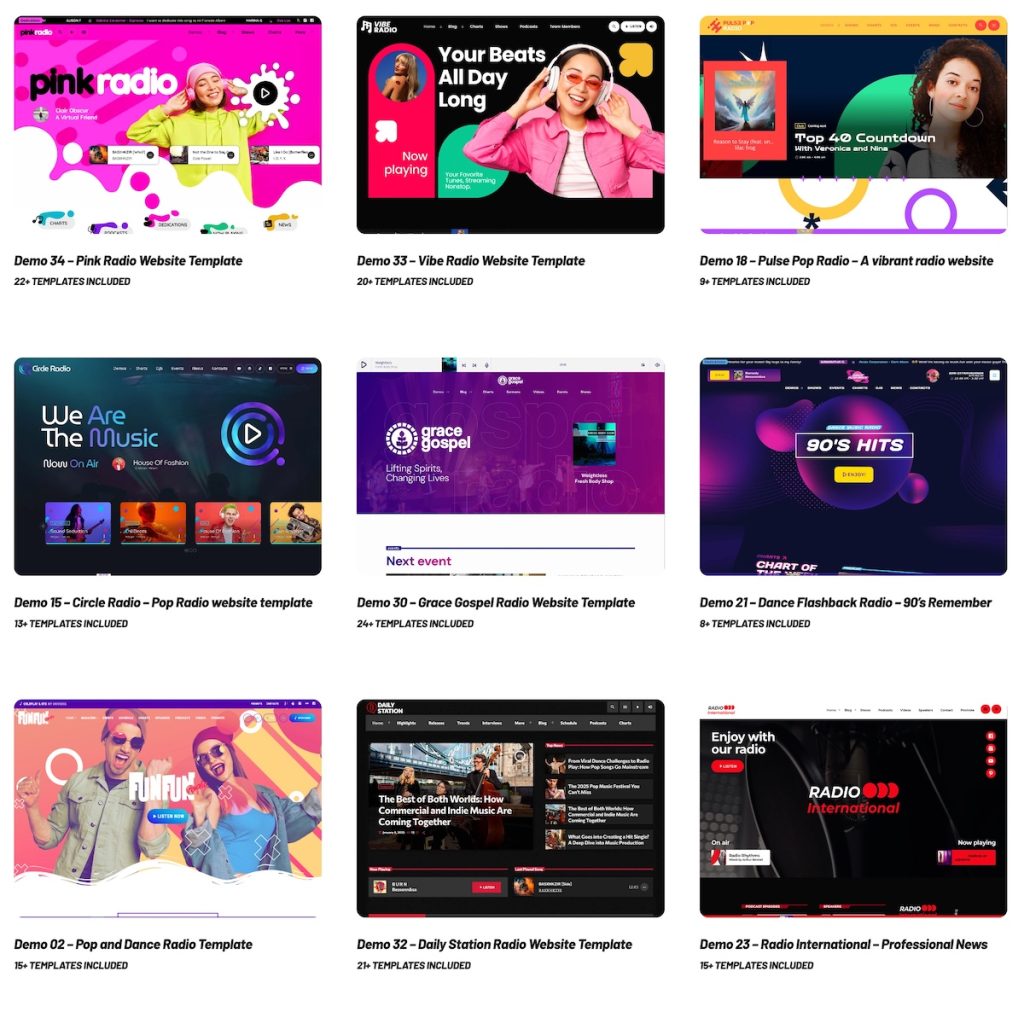
With Pro Radio you can build a professional grade radio website with everything you need, including music player for any streaming provider, radio shows, schedule, podcasts, events and more, without a single line of code.
40+ Prebuilt Websites are ready for you!
You may also like
Copyright 2019-2025 ProRadio© Qantum Themes SL©
